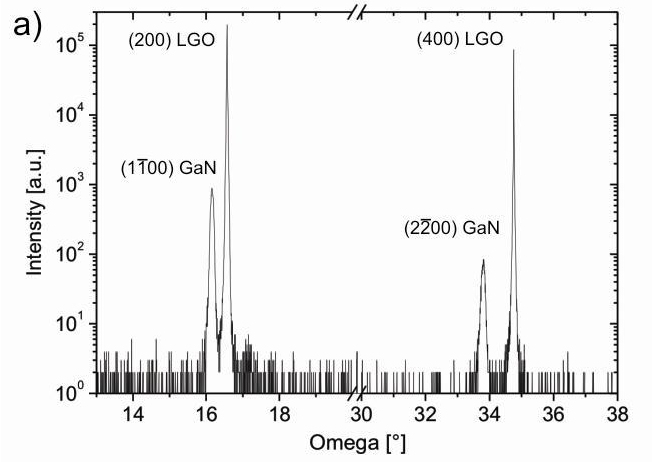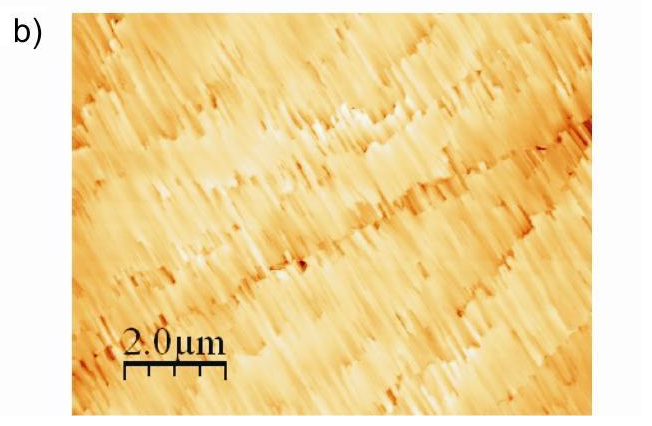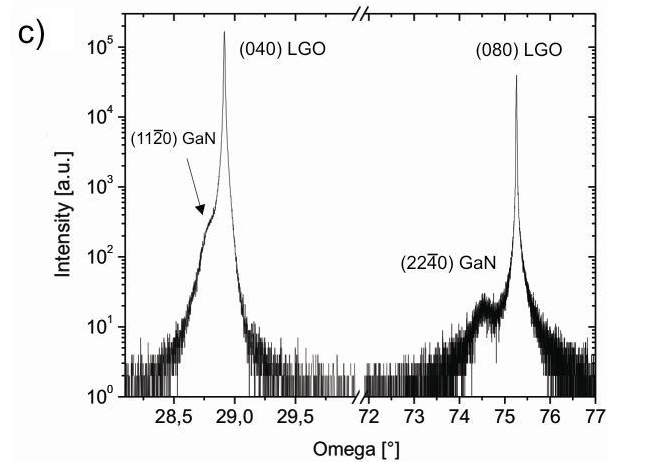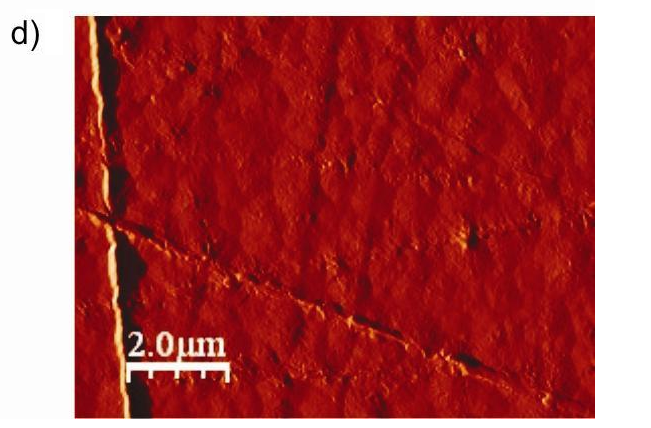A2.7: Growth of Nitride Spin Devices
Subproject Leader: Daniel Schaadt
Young Scientist Group - Schaadt, KIT
Contributing Scientists:
Present: Omar Tanirah, Ralf Schuber
Past: Yu-Chi Hsu
Group III nitride based materials find a variety of applications nowadays and have thus attracted a lot of scientific interest. Their beneficial properties include a band gap that is tuneable through the whole visible spectrum from 0.7 eV (InN) over 3.4 eV (GaN) to 6.2 eV (AlN), depending on the composition of the material. Further, high electron mobility, high thermal, chemical and mechanical stability as well as the non-toxicity of the participating elements are strong arguments for the usage of Nitrides in devices.
Within project A2, nitrides are evaluated as possible materials for spintronics at room temperature. We investigate the growth on non-polar substrates to avoid the influence of intrinsic fields and explore new dopants to obtain spin aligners at room temperature.
Non-Polar Nitrides
Group III nitrides grown along the <0001> direction show a strong quantum confined Stark effect due to the electric fields resulting from the spontaneous and piezoelectric polarization. The performance of light emitting devices is strongly influenced by these fields by reducing the energy of the radiative transition and decreasing the oscillator strength caused by a spatial separation of electrons and holes.
Epitaxial layers with non-polar surfaces such as the M-planes {1-100} [1] and A-planes {11-20} [2] are attractive due to the absence of built-in electrical fields along the growth direction. LiAlO2 and LiGaO2 constitute particularly suitable substrate as their lattice mismatch to non-polar oriented GaN is very small. Plasma assisted molecular beam epitaxy is utilized to grow M-plane films on (100) LiAlO2 and (100) LiGaO2 while A-plane GaN is grown on (010) LiGaO2.
Ferromagnetism with Cu Doping
For the use of group-III nitrides in spintronic devices, a suitable spin injector has to be found. Over the last few years, dilute magnetic semiconductors (DMS), which are proposed to show ferromagnetism at room-temperature, have raised interest due to their possible applications as spin injector at room-temperature. Investigations on the ferromagnetism in DMS usually focus on the doping with ferromagnetic transition metals like Mn or Gd. However, the origin of the ferromagnetism in these DMS is still under debate, because the intrinsic magnetic elements tend to build clusters in the nitride host and these clusters may also cause the observed ferromagnetic behavior. To avoid these problems transition metals precipitates that are ferromagnetic, a non-magnetic transition element, here Cu, was used as dopant.
Cu-doped group-III nitrides were grown by plasma-assisted molecular beam epitaxy on C-plane sapphire substrates. A slow growth rate of 70 nm per hour was used to obtain good crystalline film quality.
All our Cu-doped samples show typically the formation of islands on top of the surface. With increasing the amount of Cu, the size and the amount of the islands increase strongly. The islands are composed by the non-magnetic compound Cu9Ga4 [3], which could be partially etched in HNO3. The ferromagnetic behavior of Cu-doped group-III nitrides was explored by superconducting quantum-interference device (SQUID) magnetometry between 10 K and 400 K with the magnetic field applied parallel to the film plane. A ferromagnetic signal with small coercivity is observed [3,4] An important issue for possible spintronic applications is the Curie temperature TC. We found that our non-etched Cu-doped GaN shows ferromagnetic behavior even at 400 K [3,4].
The origin of ferromagnetic behavior in Cu-doped GaN is still unclear. On the one hand, Cu could be incorporated in the GaN lattice on Ga sites inducing ferromagnetic behavior by Zener double exchange or p-d hybridization mechanism. On the other hand, the incorporation of Cu may cause magnetically answer lattice defects, such as point defects, interstials, voids, dangling bonds etc., which may also be an origin of the ferromagnetic behavior.
References
|
[1] |
R. Schuber, M. M. C. Chou and D. M. Schaadt, Thin Solid Films 518, 6773 (2010) |
|
[2] |
R. Schuber, M. M. C. Chou, P. Vincze, Th. Schimmel and D. M. Schaadt, J. Cryst. Growth 312, 1665 (2010) |
|
[3] |
P. R. Ganz, G. Fischer, C. Sürgers, D. M. Schaadt, J. Cryst. Growth (2010), in press |
|
[4] |
P. R. Ganz, C. Sürgers, G. Fischer, and D. M. Schaadt, J. Phys. Conf. Ser. 200, 062006 (2010) |
List of Publications 2006-2011 as PDF
Subproject Report 2006-2010 as PDF



